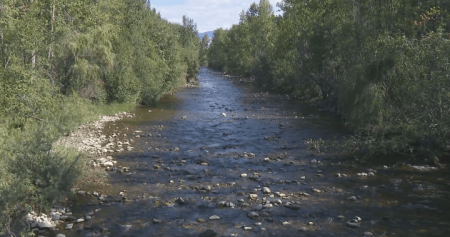Several organizations, including the City of Winnipeg, are working together following a record-breaking wildfire season to ensure the community is prepared for an air quality emergency. Through a simulation called AIR Aware, held at Sergeant Tommy Prince Place, the city tested its readiness for potential wildfires that could impact air quality. With dry winter conditions across western Canada, experts are predicting a busy wildfire season, prompting the need for proactive emergency planning. Emergency management coordinator, Mike Olczyk, stated that the city is uncertain about the air quality levels that would require a real-time response, but it is likely to be on the higher end of Environment and Climate Change Canada’s Air Quality Health Index.
To inform emergency plans, three waves of 100 volunteer actors participated in the simulation, testing the organizational systems and boosting the experience of about 30 staff members. Shawn Feely, the vice-president of the Canadian Red Cross for Manitoba and Nunavut, highlighted the importance of considering various scenarios, such as individuals with medical issues or young children, to ensure that staff and volunteers are prepared to handle different situations. The facility for the simulation included features like a first-aid station, snack and meal area, and a multicultural and quiet room to provide support through language services for those in need.
In case of an air quality emergency, the emergency centre is designed to open from daytime into evening hours and can support up to 100 people. Olczyk emphasized the importance of re-evaluating the details of the practice drill through a post-practice discussion to identify areas that went well and areas that need improvement. Feely stressed the significance of teamwork among different organizations, stating that the Red Cross collaborates with multiple partners, including not-for-profit organizations like the Salvation Army and Saint John Ambulance, as well as various levels of government. This collaborative effort ensures that during an air quality emergency, individuals in need only have to show up to receive support and fresh air.
Overall, the AIR Aware simulation aimed to assess the city’s preparedness for an air quality emergency in light of the looming threat of wildfires. With the potential for a busy wildfire season due to dry winter conditions across western Canada, emergency management coordinator, Mike Olczyk, highlighted the importance of being proactive in planning for potential scenarios. The simulation involved three waves of volunteer actors testing organizational systems and preparing staff members for different scenarios, such as individuals with medical issues or young children, to ensure that they are equipped to handle various situations effectively.
The emergency centre, set up for the simulation, included features like a first-aid station, a snack and meal area, and a multicultural and quiet room to provide language services for those in need of support. With plans to open the centre from daytime into evening hours and support up to 100 people, the city is focused on re-evaluating the drill’s outcomes through a post-practice discussion. Shawn Feely stressed the importance of teamwork among different organizations, emphasizing the collaborative effort required to address air quality emergencies effectively. By working with partners like the Red Cross, Salvation Army, Saint John Ambulance, and various levels of government, the city aims to ensure that individuals in need have access to support and fresh air during emergency situations.













